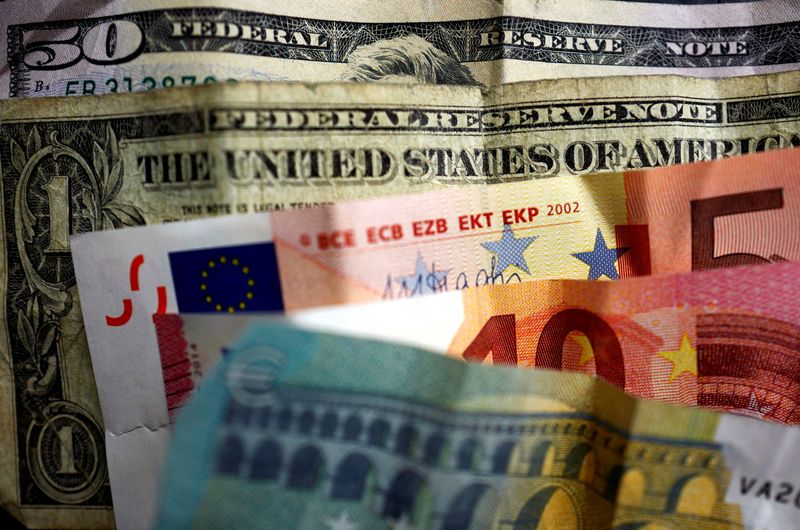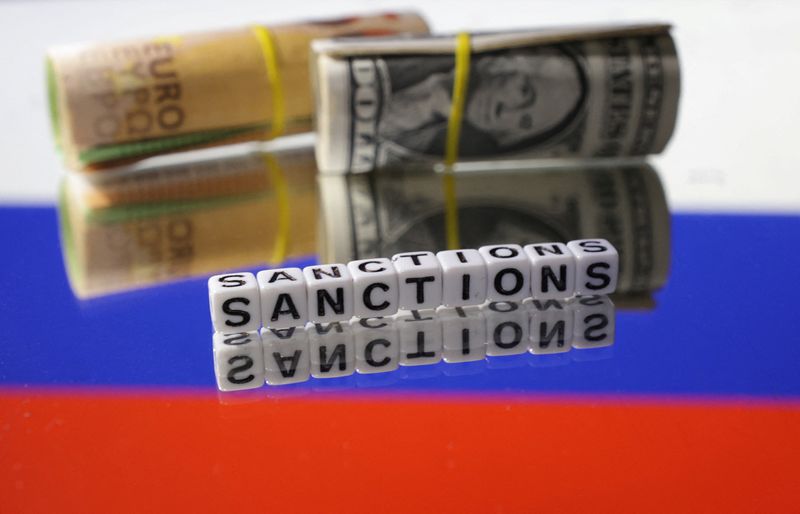Forex
Exclusive-Billions in dollar and euro notes reach Russia despite sanctions

By Gleb Stolyarov, Filipp Lebedev and Alexander Marrow
LONDON (Reuters) – Around $2.3 billion in dollar and euro bills have been shipped to Russia since the United States and EU banned the export of their banknotes there in March 2022 following the invasion of Ukraine, according to customs data seen by Reuters.
The previously unreported figures show Russia has managed to circumvent sanctions blocking cash imports, and suggest that dollars and euros remain useful tools for trade and travel even as Moscow strives to reduce its exposure to hard currencies.
The customs data, obtained from a commercial supplier that records and compiles the information, shows cash was transported to Russia from countries including the UAE and Turkey, which have not imposed restrictions on trade with Russia. The country of origin for more than half the total was not stated in the records.
The U.S. government in December threatened penalties for financial institutions that help Russia circumvent sanctions and has imposed sanctions on companies from third countries throughout 2023 and 2024.
has overtaken the greenback to become the most traded foreign currency in Moscow, although significant payment problems persist.
Dmitry Polevoy, head of investment at Astra Asset Management in Russia, said many Russians still wanted foreign currency in cash for trips abroad, as well as small imports and domestic savings.
“For individuals, the dollar is still a reliable currency,” he told Reuters.
Russia’s central bank and the United States’ sanctions authority, the Office of Foreign Assets Control (OFAC), did not respond to requests for comment.
Russia started labelling the dollar and euro as “toxic” in 2022 as sweeping sanctions cut its access to the global financial system, hampering payments and trade. Around $300 billion of the Bank of Russia’s foreign reserves in Europe have been frozen.
A European Commission spokesperson said it could not comment on individual cases of sanctions application. The spokesperson said the European Union engages with third countries when it suspects that sanctions are being circumvented.
The customs records cover March 2022 to December 2023 and Reuters could not access more recent data.
The documents showed a surge in cash imports just prior to the invasion. Between November 2021 and February 2022, $18.9 billion in dollar and euro banknotes entered Russia, compared with just $17 million in the previous four months.
Daniel Pickard, International Trade & National Security Practice Group Leader at U.S. law firm Buchanan Ingersoll & Rooney, said the pre-invasion spike in shipments suggested some Russians wanted to insulate themselves against possible sanctions.
“While the U.S. and its allies have learned the importance of collective action in maximizing economic consequences, Russia has been learning how to avoid and mitigate those same consequences,” Pickard said. He added that the data almost certainly understated actual currency flows.
LIMITED OUTFLOWS
Russia’s central bank quickly curtailed individuals’ foreign currency cash withdrawals following the invasion of Ukraine, in a bid to support the weakening rouble.
According to the data, just $98 million in dollar and euro banknotes left Russia between February 2022 and end-2023.
Foreign currency inflows, by contrast, were far higher. The largest single declarant of foreign currency was a little-known company, Aero-Trade, that offers duty-free shopping services in airports and aboard flights. It declared around $1.5 billion in bills during that period.
Aero-Trade registered 73 shipments of 20 million dollars or euros each, all of which were cleared at Moscow’s Domodedovo airport, an international hub near the company’s headquarters. The shipments were described in customs declarations as exchange or revenue from onboard trade.
In most cases, Aero-Trade was only listed as declarant, the entity that prepares and submits customs documentation. Reuters could not identify Aero-Trade’s clients and was unable to determine the source or destination of the cash.
Aero-Trade owner Artem Martynyuk told Reuters he doubted the authenticity of the customs records. He declined to comment further. The company said in a statement that “Aero-Trade is not engaged in the supply of hard currency to Russia”.
According to the customs records, one shipment of 20 million euros handled by Aero-Trade was imported in February last year by Yves Rocher Vostok, a subsidiary of French cosmetics group Yves Rocher, which still operates dozens of stores in Russia. No country of origin or supplier name was listed in the data.
Groupe Rocher, the parent company in France, said neither the group nor Yves Rocher Vostok had ever had any link with Aero-Trade or requested the transfer in question.
“Yves Rocher Vostok, like all Groupe Rocher entities, complies by the law,” a spokesperson for the group said. “It has never tried and will never try to bypass the sanctions on dollar and euro banknotes imports into Russia.”
GOLD, ARMS, BANKING
More than a quarter of the $2.27 billion in banknotes was imported by banks, much of it in payment for precious metals, according to the customs records and a person familiar with the transactions.
Several Russian banks received cash worth $580 million from abroad between March 2022 and December 2023 and exported roughly equivalent amounts of precious metals. In many cases, the gold or silver shipments went to the companies that supplied banknotes, the records showed.
For instance, Russian lender Vitabank imported $64.8 million in banknotes from Turkish gold trading firm Demas Kuyumculuk in 2022 and 2023. During the same period, Vitabank exported $59.5 million in gold and silver to the Turkish company.
A person familiar with Demas’ operations confirmed the company took part in a series of cash-for-gold transactions involving Vitabank and two other Russian lenders between March 2022 and September 2023.
The person said having banknotes delivered from the UAE to Russia was the only solution Demas found to complete long-term contracts signed before Western sanctions took effect with Russian gold suppliers, while still complying with Turkish and international regulations related to cross-border payments.
With sanctions effectively cutting Russia off from the Western financial system, settling bills with traditional wire transfer was no longer possible, the person said.
Reneging on existing agreements would have exposed Demas to financial penalties and reputational risks, the person said. The Turkish gold trader never did business with entities under Western sanctions, and strictly follows all national and international compliance procedures, the person added.
In the third quarter of last year, once all pre-war contracts with Russian companies were completed, Demas ended the two-way trades, the person said.
Vitabank, the UAE and the Turkish presidency’s communications directorate did not respond to Reuters’ requests for comment.

Among other major cash importers were entities controlled by Rostec, the state-owned military-industrial conglomerate, the documents showed.
Rostec, which has been under U.S. sanctions since 2014, did not respond to Reuters’ questions about the cash payments it received.

 Forex3 years ago
Forex3 years agoForex Today: the dollar is gaining strength amid gloomy sentiment at the start of the Fed’s week

 Forex3 years ago
Forex3 years agoUnbiased review of Pocket Option broker

 Forex3 years ago
Forex3 years agoDollar to pound sterling exchange rate today: Pound plummeted to its lowest since 1985

 Forex3 years ago
Forex3 years agoHow is the Australian dollar doing today?

 Cryptocurrency3 years ago
Cryptocurrency3 years agoWhat happened in the crypto market – current events today

 World3 years ago
World3 years agoWhy are modern video games an art form?

 Commodities3 years ago
Commodities3 years agoCopper continues to fall in price on expectations of lower demand in China

 Economy3 years ago
Economy3 years agoCrude oil tankers double in price due to EU anti-Russian sanctions





















